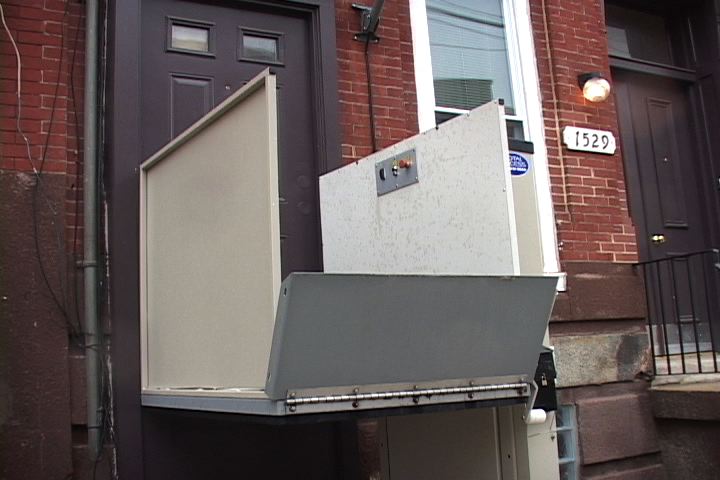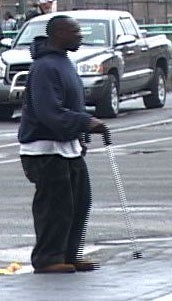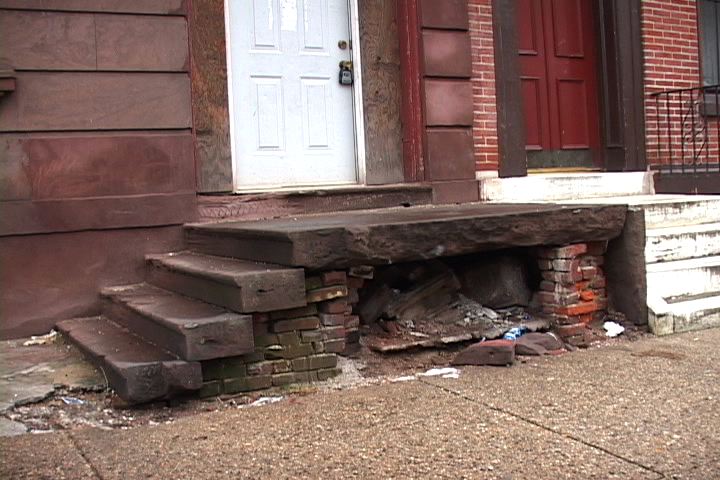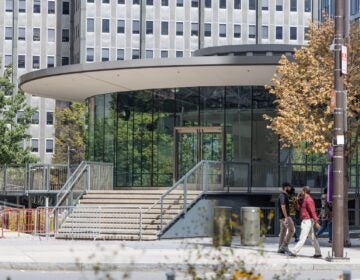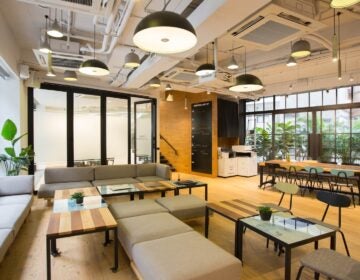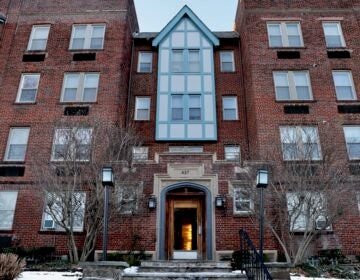Making rowhomes more age-friendly
By Mary Mazzoni and Stephanie Mullen
For PlanPhilly
This article was created in partnership with Temple University’s capstone journalism course Philadelphia Neighborhoods.
About 8,000 people become 65 years old every day.
The people who reach this age in Philadelphia today may be in for a rude awakening when they try to find housing to suit their needs. Row homes have been the most prevalent form of housing in the city for centuries, and as residents age these row homes can become difficult or impossible to navigate.
Historic neighborhoods like Francisville are hard hit by this problem, with few housing options other than older row homes, which Susan Klein, director of housing for the Philadelphia Corporation for Aging, said can present a number of problems for seniors and others facing mobility issues.
“There are a lot of seniors in old houses,” Klein said. “We call it ‘Peter Pan housing.’ It’s great for people who never grow old, and if you can fly, it’s even better.”
The standard row home has narrow halls and doorways and several steps at each entrance. Few have bathrooms on the first floor, which presents an even greater obstacle for people who struggle using stairs, Klein said.
“A typical row home is very problematic for seniors or people acting as caregivers…for a senior,” Klein said.
The design of Philadelphia row homes can present so many obstacles that they become impossible for seniors and people with disabilities to live in. Many are so problematic that people with mobility issues can’t even visit them, advocates said.
Klein and other local advocates said the design concept of visitability is the key to solving this problem.
The term visitability, coined by Eleanor Smith of Concrete Change in Atlanta, refers to new homes designed with at least one step-free entrance, a half-bathroom on the first floor and doors and hallways that are wide enough to be maneuvered by a person using a wheelchair or walker.
Smith, who has travelled the country speaking to architects and designers about visitability, formed the concept from memories of her childhood – when she used a wheelchair for mobility due to symptoms of polio.
“She would play with her friends, but she could never go to their homes because she couldn’t get in,” Nancy Salandra, director of independent living services at Liberty Resources – a nonprofit advocacy group for people with disabilities, said of Smith. “It always bothered her. So, as an adult she came up with this concept.”
The concept is simple and relatively inexpensive when building new homes, advocates said. Paul Chrystie, director of communications for the Office of Housing and Community Development, agreed. The Office of Housing and Community Development requires all the new construction it funds to be visitable.
“When visitability is incorporated into the site design and home design, the cost for a visitable unit is less than $1,000 more than a non-visitable unit,” Chrystie said.
Advocates pointed out that designing homes for visitability will not necessarily make these homes ideal for seniors or people with disabilities to live in, but it will make it easier for them to socialize with neighbors and family members.
“Let’s say somebody is having Thanksgiving dinner with their grandma,” Klein said. “Now grandma can get into the house. We don’t build houses in Philadelphia that way.”
Klein was quick to point out that visitable homes are not only for the elderly or disabled.
“It doesn’t matter whether your teenager breaks a leg playing football or it’s somebody using a wheelchair,” Klein said.
The Community Design Collaborative, a volunteer-based design center that provides pro bono services to nonprofits, held a visitability seminar last year “to acquaint the designer community with the issue,” said Linda Dottor, the program manager.
“In design, we use stairs as a device to fit houses into the community,” Dottor said. “When you talk about visitability, you take away that device. So, you’re talking about less traditional units that still need to fit in with the neighborhood.”
Salandra, who sat on the discussion panel at the seminar, said the untrained eye would never notice a well-designed visitable home when compared to a non-visitable counterpart.
“I guarantee that I could show you visitable homes and you would have no idea,” Salandra said. “The steps don’t add anything to the way the home looks.”
The report from the seminar, issued last week and available through the Community Design Collaborative by request, includes design possibilities for visitable homes, including small front yards with graded no-step entrances and zero-step front porches.
“The [seminar] was amazing because none of those architects had heard of visitability,” Salandra said. “They learned a lot, and I think it changed a lot of peoples’ ideas and thoughts. Hopefully they can bring it up to some of their builders.
The funding of most subsidized housing in Philadelphia – including funding through the Office of Housing and Community Development – requires homes to be visitable, but few requirements affect market rate housing.
“Many people either face mobility challenges or have friends and family who face such challenges,” said Deborah McColloch, director of the Office of Housing and Community Development. “Visitability is an important feature enabling Philadelphians and the people who visit them to lead independent lives.”
Since the Office of Housing and Community Development instituted its visitability requirements, it has funded more than 2,000 visitable units throughout the city, but advocates said the demand for visitable and accessible housing remains high, especially in neighborhoods like Francisville.
While Salandra said advocates have been pushing for a visitability ordinance in the city for more than decade, the only visitability regulations affecting market rate housing are new zoning codes that say that if 50 market rate units are built at once, 10 percent of these units must be visitable. Advocates said the regulation doesn’t mean much.
“Having requirements for more than 50 homes has very little meaning because very little building in the city has 50 homes at once,” Klein said. “If [the city] was serious about this, the goal would be 100 percent visitability.”
WHYY is your source for fact-based, in-depth journalism and information. As a nonprofit organization, we rely on financial support from readers like you. Please give today.



